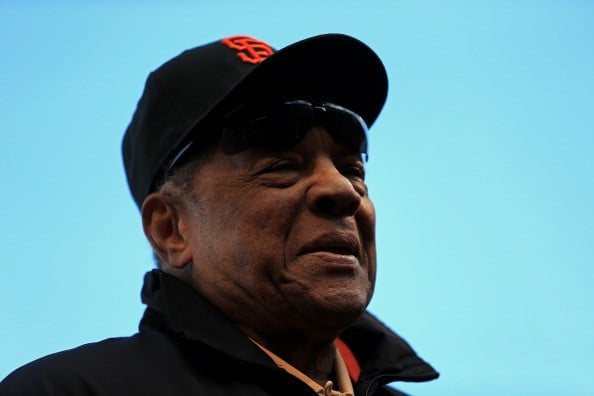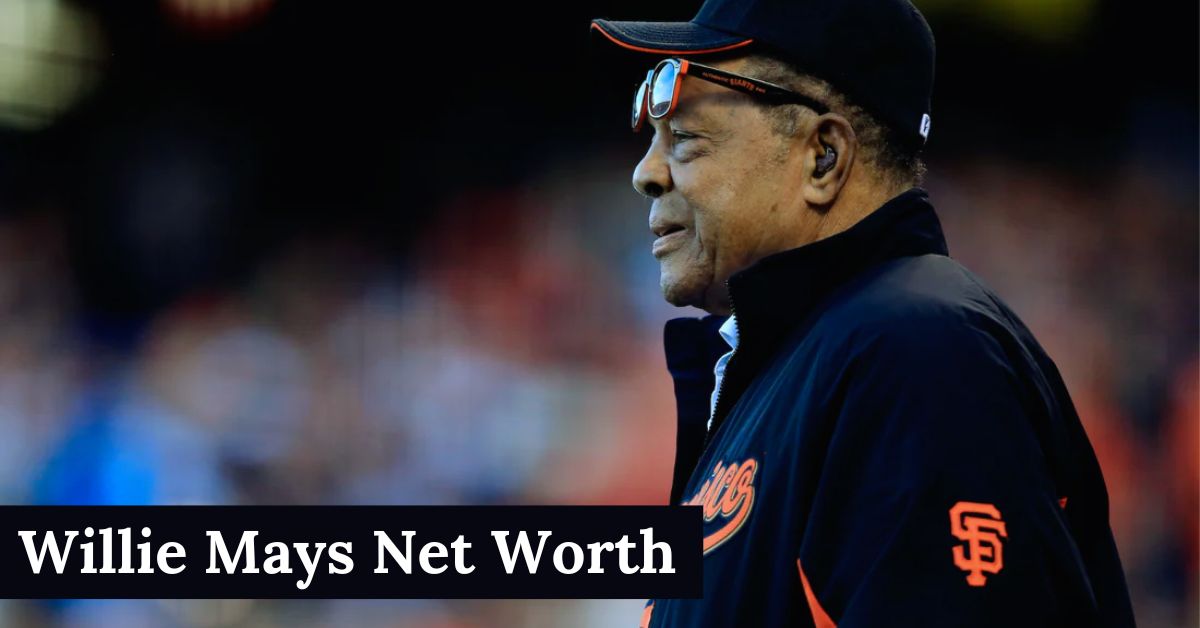Willie Mays: The Life And Legacy Of Baseball’s Greatest Star
- Category:
- Richest Athletes › Baseball Players
- Net Worth:
- $8 Million
- Birthdate:
- May 6, 1931 - June 18, 2024 (93 years old)
- Birthplace:
- Westfield, Alabama
- Gender:
- Male
- Height:
- 5 ft 10 in (1.8034 m)
- Profession:
- Baseball Player
- Nationality:
- United States of America
What Was Willie Mays’ Net Worth?
Willie Mays, the legendary American baseball player, left behind an incredible legacy both on and off the field. At the time of his passing, Mays had amassed a net worth of $8 million. Over a 22-year career that spanned from 1951 to 1973, Mays became one of the most celebrated athletes in history. Known for his incredible agility, power, and unmatched skill, he played primarily for the New York/San Francisco Giants. He earned 12 consecutive Gold Glove Awards and even helped lead the Giants to a World Series title in 1954. Mays wrapped up his playing career with the New York Mets, retiring after the team’s loss in the 1973 World Series. Sadly, Willie passed away on June 18, 2024, at the age of 93, leaving behind a legacy that will forever inspire future generations of baseball fans.
Salary, Contracts, and Endorsements
Throughout his storied career, Willie Mays earned a total of $1,148,467 in salary and contracts. While this might not sound like much compared to today’s standards, it was an impressive sum back then. His highest salary came in 1973, when he made $180,000—equivalent to about $1.2 million in today’s money. For much of his career, Mays was one of the highest-paid players in baseball, leading the league in salary a remarkable 10 times.
Here’s a breakdown of Mays’ earnings over the years:
Read also:Greg Laurens Multifaceted Journey Net Worth Career And Creative Ventures
- 1951-1957: $7,500 per year
- 1958: $65,700
- 1959-1963: $100,000 per year
- 1964: $105,000
- 1965: $125,000
- 1966-1969: $150,000 per year
- 1970-1972: $165,000 per year
- 1973: $180,000
But Mays wasn’t just earning money on the field. As one of the most beloved athletes of his time, he also scored lucrative endorsement deals. Companies like Coca-Cola, Wheaties, and Ford recognized his star power and signed him to promote their products. These partnerships further cemented his status as a household name and contributed significantly to his overall wealth.
Early Life and Education
Willie Mays Jr. was born on May 6, 1931, in Westfield, Alabama, to Annie and Cat Mays. From the start, it was clear that Willie was destined for greatness. Both of his parents were athletes—his mother was a basketball and track star in high school, while his father played baseball for a local black team at an iron plant. When Willie was just three years old, his parents separated, and he was raised by his father and aunts. Growing up, Willie excelled in multiple sports, including football and basketball, but it was baseball where he truly shone. He attended Fairfield Industrial High School, where his talents continued to flourish, setting the stage for a future in professional sports.
Beginnings in Negro and Minor Leagues
Willie Mays began his professional baseball journey while still in high school. In the summer of 1948, he joined the Negro minor league team, the Chattanooga Choo-Choos. It wasn’t long before he made the leap to the Negro American League's Birmingham Black Barons, where he reached the 1948 Negro World Series. Unfortunately, the Barons fell short, losing to the Homestead Grays. Despite the loss, Mays caught the attention of several Major League Baseball (MLB) teams, but they had to wait until he graduated from high school before signing him. Once he graduated, Mays signed with the New York Giants and began playing in the minors for the Trenton Giants and the Minneapolis Millers. These early experiences helped shape him into the player he would become.
Willie’s Journey with the New York Giants
Mays was called up to the Giants in May 1951, and it wasn’t long before he made an unforgettable mark on the MLB. In his 13th at-bat, on May 28, he hit his first career home run. By the end of the regular season, Mays was batting .274 with 20 home runs and 68 RBIs, earning him the prestigious NL Rookie of the Year award. That same year, he and the Giants advanced to the 1951 World Series, where they faced off against the New York Yankees. Unfortunately, the Yankees took the championship, but this was just the beginning for Mays. After the season, he was drafted into the U.S. Army for the Korean War, playing on military baseball teams during his service.
Mays returned to the Giants in 1954 and had one of the best seasons of his career. He won the NL MVP Award and the Hickok Belt, leading the team to a World Series title. During Game 1 of the series, Mays made an over-the-shoulder running catch that remains one of the most iconic moments in baseball history. In 1955, Mays led the league with 51 home runs, and the following year, he became the second player to join the 30-30 club, hitting 36 home runs and stealing a career-high 40 bases. In 1957, Mays received the first of his 12 consecutive Gold Glove Awards, further solidifying his status as a baseball legend.
Willie’s San Francisco Years
When the Giants moved to San Francisco in 1958, Mays became the highest-paid player in baseball, signing a $75,000 contract. In 1959, he batted .313 with 34 home runs and 113 RBIs, leading the league in stolen bases for the fourth consecutive year. The Giants moved into Candlestick Park in 1960, but the unpredictable winds there posed a challenge for Mays. Despite this, he still managed to hit 190 times, leading the NL in hits that season. In 1962, Mays and the Giants had their best season in San Francisco, advancing to the World Series against the Yankees once again. Although the Yankees won the championship in seven games, Mays' performance was nothing short of remarkable.
Read also:Carroll Oconnors Net Worth 2024 A Legendary Career In Numbers
In 1964, Mays was named captain of the Giants, making history as the first African-American captain in MLB history. That season, he led the NL with 47 home runs. The following year, Mays reached a significant milestone by hitting his 500th career home run in September, finishing the season with a career-high 52 home runs. He also won his second NL MVP Award. Despite some ups and downs in the late 1960s, Mays continued to excel, hitting his 600th career home run in September 1969. He was named "Player of the Decade" by The Sporting News for the 1960s, a testament to his enduring greatness.
Final Years with the New York Mets
Mays returned to New York in 1972, signing with the Mets for his final two seasons in the MLB. In his first year with the team, he played 88 games, batting .250 with eight home runs. In his final season in 1973, Mays spent much of the time on the disabled list, batting a career-low .211 with six home runs. Nevertheless, the Mets advanced to the NL East and the NLCS, eventually reaching the World Series against the Oakland Athletics. Mays had the final at-bat of his career in Game 3 of the tournament. The Athletics ultimately won the series in seven games, and Mays retired from professional baseball shortly afterward.

Post-Playing Career
After hanging up his cleats in 1973, Mays stayed involved with the Mets as a hitting instructor until the end of the 1979 season. That same year, he was inducted into the National Baseball Hall of Fame, a fitting tribute to his incredible career. Mays then took on a new role at the Bally’s Park Place casino in Atlantic City, New Jersey, where he served as a greeter and special assistant to the casino president. In 1986, he returned to the baseball world, becoming a special assistant to the president and general manager of his former team, the Giants. Mays also founded the Say Hey Foundation, a charity dedicated to promoting youth baseball. In 2015, he received one of the nation’s highest honors, the Presidential Medal of Freedom, awarded to him by President Barack Obama.
Personal Life and Passing
Mays married Marghuerite Chapman in 1956, and the couple adopted a baby boy named Michael in 1959. They divorced in 1963 after separating the previous year. In the early 1970s, Mays married Mae Allen, a child-welfare worker, and the two remained together until her passing in 2013 due to Alzheimer’s disease. Willie Mays passed away on June 18, 2024, at the age of 93, leaving behind a legacy that will continue to inspire future generations.
Willie Mays’ Real Estate
For many years, Willie Mays called Atherton, California, home. This upscale neighborhood is known for its luxurious estates, and Mays lived in a stunning 5,000-square-foot home. While the exact purchase date and price remain unclear, the property is currently valued at a minimum of $7 million, reflecting Mays’ success and the wealth he accumulated throughout his illustrious career.
James Caan: A Legendary Actor's Journey And Legacy
Cuba Gooding Jr: A Life In Spotlight And Challenges
Charlamagne Tha God: The Man, The Myth, The Legend


